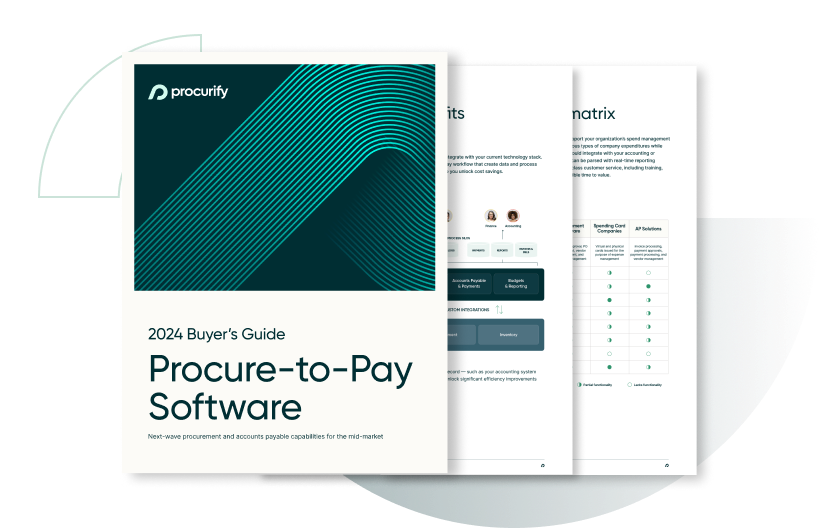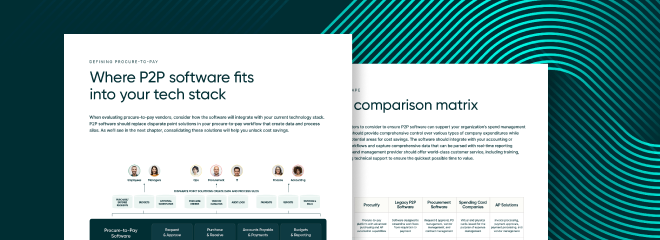
Enhanced Procurement Management: Navigating the New Era of Strategic Purchasing
Introduction to procurement management
Procurement management is a critical business function that involves acquiring goods and services necessary for an organization’s operations. Traditionally, this process has focused on finding cost-effective solutions while ensuring quality and reliability. However, as business environments become more dynamic, the need for more efficient, transparent, and agile procurement methods has become evident. This shift marks the transition towards enhanced procurement management, which leverages technology and innovative strategies to meet modern business demands.
Defining enhanced procurement management
Enhanced procurement management represents a progressive approach to acquiring goods and services. It goes beyond traditional methods by integrating advanced technologies, data analytics, and strategic sourcing techniques. This approach not only focuses on cost savings but also emphasizes value creation, supplier collaboration, and process efficiency. Enhanced procurement leverages tools like artificial intelligence, machine learning, and cloud-based platforms to streamline processes, provide real-time data insights, and foster more informed decision-making. The result is a more responsive and adaptable procurement function, capable of navigating the complexities of today’s global supply chains.
Technological advancements in procurement
he landscape of procurement has been significantly reshaped by technological advancements. Key technologies playing a pivotal role include:
-
Artificial intelligence (AI) and machine learning (ML):
These technologies aid in predictive analytics, automated decision-making, and enhanced data processing capabilities. They enable procurement teams to anticipate market trends, manage risks better, and identify cost-saving opportunities.
-
Blockchain technology:
Known for its application in cryptocurrencies, blockchain offers procurement a secure, transparent way to track transactions and manage contracts. This technology enhances trust, reduces fraud, and streamlines supplier verification processes.
-
Cloud-based solutions:
Cloud platforms facilitate better collaboration, data accessibility, and scalability. They allow procurement teams to access real-time data, collaborate with suppliers remotely, and adapt to changing business needs quickly.
-
Internet of things (IoT):
IoT devices help in monitoring supply chains, managing inventory, and ensuring product quality. They provide real-time insights into logistics, helping businesses optimize their supply chain operations.
These technologies, when integrated into a procurement process, not only streamline operations but also provide strategic insights, leading to more informed decision-making and enhanced operational efficiency.
Benefits of enhanced procurement management
Adopting enhanced procurement management brings several key benefits to organizations:
-
Cost Efficiency:
Advanced procurement methods often lead to significant cost savings. By leveraging analytics and AI, organizations can identify the best suppliers, negotiate better terms, and reduce wasteful spending.
-
Improved Supplier Relationships:
Enhanced procurement emphasizes collaboration and strategic partnerships with suppliers. This approach can lead to more innovative solutions, shared growth opportunities, and improved supply chain resilience.
-
Risk Management:
Enhanced procurement provides tools for better risk assessment and management. By analyzing data trends and market dynamics, organizations can anticipate and mitigate potential supply chain disruptions.
-
Process Optimization:
Automation and AI-driven tools streamline procurement processes, reducing manual tasks and errors. This leads to increased efficiency and allows procurement teams to focus on strategic tasks.
-
Data-Driven Decision Making:
With access to real-time data and analytics, procurement decisions are more informed, strategic, and aligned with business objectives.
-
Sustainability and Compliance:
Enhanced procurement enables better tracking and management of sustainability practices and regulatory compliance across the supply chain.
These benefits collectively contribute to a more agile, efficient, and competitive business operation, aligning procurement functions with broader organizational goals.
Challenges and considerations
While enhanced procurement management offers numerous benefits, it also presents certain challenges and considerations:
-
Integration Complexity:
Implementing new technologies into existing procurement softwares can be complex. It requires careful planning, training, and change management to ensure a smooth transition.
-
Data Security and Privacy:
With the increased use of digital tools, safeguarding sensitive data becomes crucial. Organizations must ensure robust cybersecurity measures are in place to protect against breaches.
-
Supplier Onboarding:
Transitioning to enhanced procurement methods may require suppliers to adopt new technologies or processes. This can be a challenge, especially for smaller suppliers with limited resources.
-
Cost of Implementation:
Upfront costs for advanced procurement technologies can be significant. Organizations need to evaluate the return on investment and plan their budgets accordingly.
-
Skill Gap:
The shift towards technology-driven procurement requires staff with specialized skills. Organizations may face challenges in recruiting talent or upskilling existing employees.
-
Balancing Technology and Human Insight:
While technology plays a critical role in enhanced procurement, human judgment and expertise remain vital. Finding the right balance between automated processes and human decision-making is key.
Addressing these challenges requires a procurement strategy, with a focus on long-term goals, continuous learning, and adaptability.
Case studies and real-world examples
To illustrate the impact of enhanced procurement management, let’s explore a few real-world examples from our customers:
-
Supporting Texas Rocket Engineering Lab on Their Rocket Launch Mission (Engineering)
TREL needed a solution that streamlined business operations without slowing their engineers down, so they started evaluating options. Blackwell’s other workplace, an aerospace organization, was using Procurify to manage their spend. Having seen the platform previously, Bryce knew the transition from spreadsheets to Procurify would allow the team at TREL to better control their spend without slowing down their processes.
-
Seamless Purchasing Process with NetSuite and Procurify (Healthcare)
Inari Medical, Inc. needed a procurement solution that integrated with NetSuite and empowered their engineers to easily purchase what they required. That’s when they reached out to Procurify.
-
Circle Pharma Simplifies Spend Management and Accelerates Growth with Procurify (Biotech)
After doing a full comparison of Procurify against alternative biotech-specific spending solutions – and having a well-respected biotech organization refer Procurify to Cowgill – the Circle Pharma team selected Procurify as their go-to spend management platform.
These examples demonstrate how diverse industries can leverage enhanced procurement management to achieve cost savings, efficiency, and strategic advantages.
Future trends in procurement management
As we look towards the future, several trends are likely to shape the landscape of procurement management:
-
Increased Automation:
The use of AI and machine learning in procurement is expected to grow, automating more processes and providing deeper insights into supply chain management.
-
Sustainability Focus:
There will be a stronger emphasis on sustainable procurement practices, with organizations increasingly prioritizing environmental and social factors in their procurement decisions.
-
Collaborative Ecosystems:
The trend towards building collaborative relationships with suppliers will continue, focusing on long-term partnerships rather than transactional interactions.
-
Advanced Data Analytics:
The role of data in procurement will become more sophisticated, with predictive analytics playing a key role in decision-making processes.
-
Integration of New Technologies:
Technologies like 5G, augmented reality, and the Internet of Things (IoT) are expected to be integrated into procurement processes, further enhancing efficiency and transparency.
-
Tailored Procurement Strategies:
Organizations will adopt more customized procurement strategies, tailored to specific industry needs and company goals.
These trends indicate a future where procurement is more strategic, data-driven, and aligned with broader business objectives and global sustainability goals.
Conclusion and key takeaways
Enhanced procurement management is more than just a trend; it’s a strategic evolution in how organizations approach the acquisition of goods and services. This approach, characterized by technological integration, data-driven decision-making, and a focus on sustainability and efficiency, is setting new standards in procurement practices.
Key takeaways include:
-
Embracing Technology:
The successful implementation of AI, blockchain, and cloud-based solutions is crucial for modern procurement strategies.
-
Cost-Efficiency and Value Creation:
Enhanced procurement goes beyond cost savings, focusing on creating value and building strong supplier relationships.
-
Adaptability and Resilience:
Organizations must remain adaptable to changing market conditions and resilient in the face of supply chain disruptions.
-
Sustainability and Ethics:
A commitment to sustainable and ethical practices is not only good for the planet but also beneficial for business reputation and compliance.
-
Continuous Learning and Development:
As procurement evolves, continuous learning and skill development become essential for procurement
-
Future-Readiness:
Staying abreast of trends like automation, sustainability, and collaborative ecosystems will be key to maintaining a competitive edge in procurement.
As organizations continue to navigate a rapidly changing business landscape, the adoption of enhanced procurement practices will play a pivotal role in driving efficiency, innovation, and sustainable growth.





